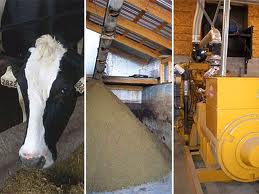Waste and Odor
Waste and Odor
Dairy Articles
The extent to which livestock operations in the US can reduce greenhouse gas emissions from manure management depends in part on the number of livestock operations that adopt methane digesters, which in turn depends on digester profitability from energy savings, energy sales, and/or sales of emission reductions in a carbon offset market, according to a new report from Nigel Key and Stacy Sneeringer for the USDA.
The discovery that a bacterial species in the Australian Tammar wallaby gut is responsible for keeping the animal’s methane emissions relatively low suggests a potential new strategy may exist to try to reduce methane emissions from livestock, according to a new study.
Managing manure on a large dairy farm takes serious planning, and Brookside Dairy in Indiana County is adopting new technology that that saves money and protects the environment.
Some call it the smell of money, but Teng Teeh Lim thinks that smell does not have to be so bad. The University of Missouri Extension researcher wants to give large, concentrated animal operations an economical way to lessen those troubling smells.
Fertiliser N prices, having decreased in 2009 and 2010, increased again in 2011. Fertiliser accounts for roughly 15-20 per cent of the total variable costs on dairy farms.

